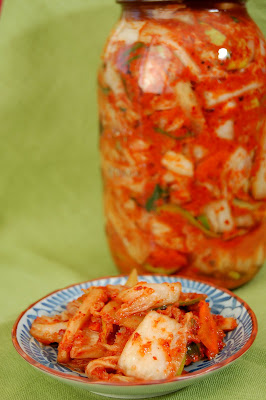This Crocus in the afternoon sunlight was beckoning for attention. Enjoy!

My silly, random blog...

For the Gnocchi:
Spoon a bit of meat sauce out onto two plates and place the meat to one side or the plate. Serve gnocchi along side the meat.

In addition to Hans’, I thought of a few other great places I have come across in the past where you can find some German meat delights! I would love to hear your comments on any great local food outlets carrying on traditions in your area.
Bavarian Meats (Seattle, WA)
Uli’s Famous Sausage (Seattle, WA)
K & K Foodliner Ltd (Edmonton, AB, Canada)
Granzin’s Meat Market (New Braunfels, TX)


Rather than posting the recipe that I used, I recommend you check out Maangchi's Easy Kimchi. This is the recipe I followed and, as a bonus, there is handy video to show you exactly what to do. While you're there, you can peruse through her many other great recipes and cooking demonstrations. The site is filled with a lot of informative how-to's to get you started with the basics of cooking Korean food!

 My project started off with the selection of the main ingredient, milk. I chose to go with a tasty grass fed raw milk from a vendor at my local farmer's market. While I used raw milk for this, yogurt can be made with any kind of milk, pasteurized skim, low fat, whole, cow, goat,etc.
My project started off with the selection of the main ingredient, milk. I chose to go with a tasty grass fed raw milk from a vendor at my local farmer's market. While I used raw milk for this, yogurt can be made with any kind of milk, pasteurized skim, low fat, whole, cow, goat,etc.
After six hours the yogurt had firmed up, signaling to me that the fermentation was finished. I covered the crock with some plastic wrap and placed it in the refrigerator overnight.
Though it was a lengthy process, I can easily see myself doing this more often. Outside of the initial heating and mixing, most of the production time involves no effort, and the results are well worth it!